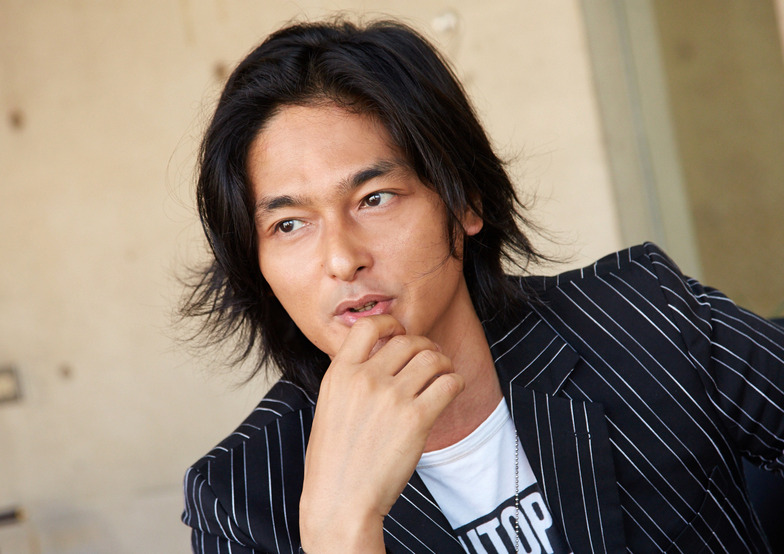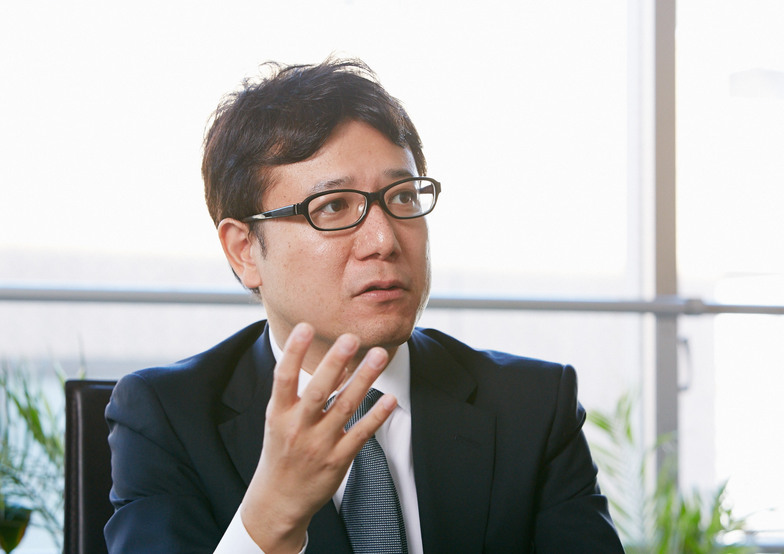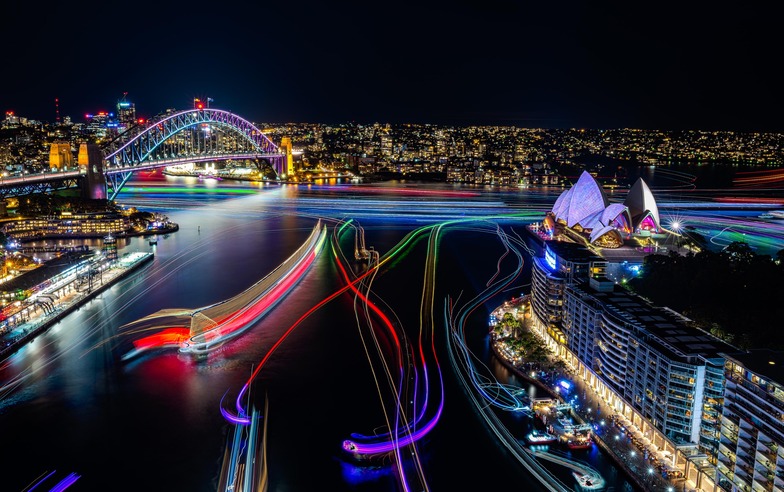The immersive hall event " AQUARIUM BY NAKED - TO THE SEA- " (hereafter referred to as Aquarium), where visitors can experience a sea voyage through all five senses, runs until the end of August. This is the second part of a conversation between Ryotaro Muramatsu of NAKED, who produced this innovative event, and Keita Yoneyama of Dentsu Inc.
Interview & Editing: Aki Kanahara, Dentsu Inc. Event & Space Design Bureau
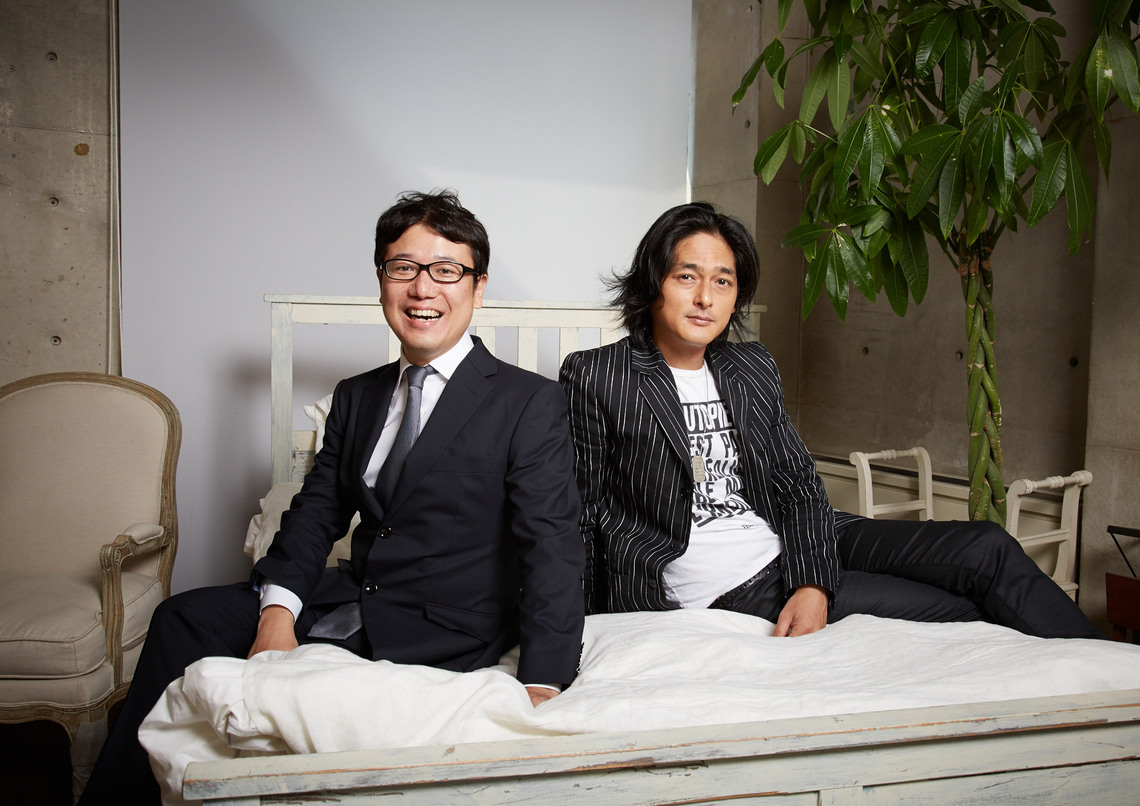
(From left) Mr. Yoneyama, Mr. Muramatsu ※At NAKED Headquarters
"Will it meet expectations?" ↔ "Will it exceed expectations?"
Yoneyama: When creating a story, you build it while considering the audience's expectations, right?
Muramatsu: Yes, ultimately we do think about it. We try to synchronize with the audience's sensibilities to avoid any disconnect.
Yoneyama: It's no good to exceed expectations too much, and it must be difficult to meet them just right.
Muramatsu: I think relationships between men and women are the same. Some people say they like forceful types, but if someone is truly forceful, it's probably just annoying. You need the right amount of forcefulness, and I think the person receiving it probably wants their expectations to be exceeded. Finding that balance is crucial.
Creating that element of surprise is also tricky. What I want to achieve is a realm where anyone can be moved—whether they're a novice, an expert, or a hardcore enthusiast. Even someone who knows nothing about it and just stumbles upon it can be moved. I want it to be popular, yet essential; new, yet classic. In a way, it's like The Beatles.
Ever since I started this company, I've been searching for how to become like the Beatles, or what it means to be Beatlesque. There's no logical reason why "Let It Be" has such a brilliant melody, and the moment "Hey Jude" starts with that "Hey~," you just think, "Why is this so perfect?"
Fans listen and sigh with delight, people who aren't familiar with them think it's nice, and kids hear it and just end up remembering it. I keep wondering, "What is this?" There are all these axes, right? Popular, niche, and so on. I think there must be some kind of chord, a point of harmony that transcends logic. That's what I believe is the point that moves people.
Interaction design tailored to human perception
Yoneyama: I see. Next, let's talk about tactile sensations. In the tech world these days, interactivity is highly valued, right? Aquariums also feature interactive displays.
Muramatsu: Regarding interaction, I always wonder, "What's the point of things like 'Stand here,' 'Hold your hand over this,' and 'Then something happens'?" That's why I base everything on a reaction model. You don't need explanations to draw out natural actions.
Yoneyama: So it's about the audience naturally and actively enjoying themselves. In English, "amusement" is said to mean actively enjoying something yourself, while "entertainment" is more like passively enjoying something, like opera or movies. Naked's work seems to sit somewhere between amusement and entertainment.
Muramatsu: That's true. I don't like participatory art that's just for show. Like in "Flowers," blowing air on the dandelion to make it float away—that's a natural human action, blowing on a dandelion. It feels effortless, right? Blowing on a dandelion is a good memory, isn't it? Because it's tied to a good memory, the act of blowing itself isn't stressful.
So it's about using interaction to match people, rather than making people conform to technology. It aligns with human senses. It feels closer to nerves than the brain, since it's a sensor. Touch and taste are like that too, right? Nerves are still quite mysterious.
Yoneyama: The final sense is taste. Naked handled the spatial production and menu development for the restaurant "9STORIES" (Yoyogi-Uehara, Tokyo), and also created the bar experience for "Flowers," didn't they?
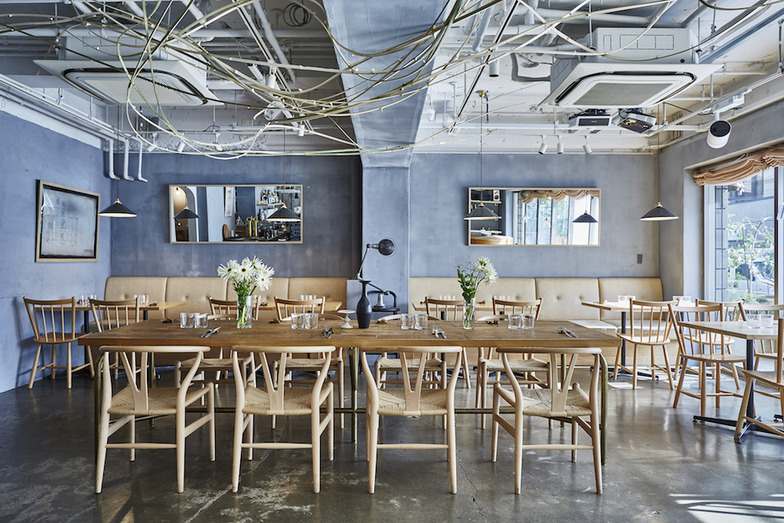
9STORIES Interior

9STORIES Menu
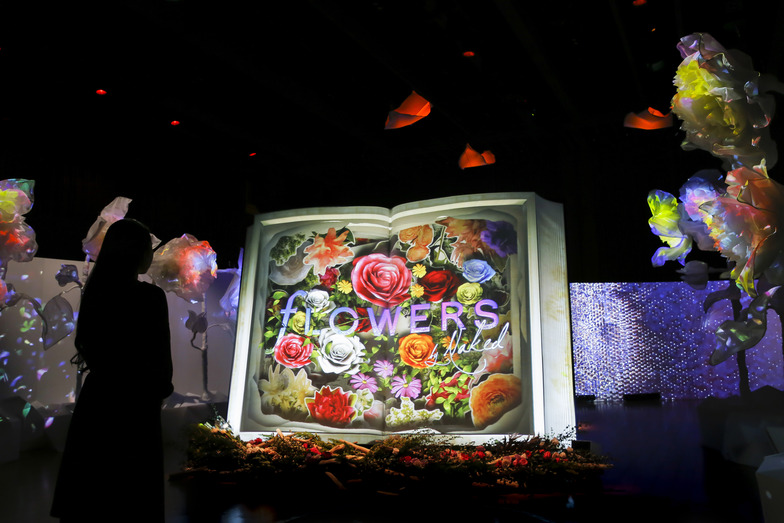
"FLOWERS BY NAKED Secret Garden" BIG BOOK, BIG FLOWERS

"FLOWERS BY NAKED Secret Garden" Cherry Blossom Colors
Muramatsu: Taste, like smell, is a very direct sense. So how to enjoy taste within that space is precisely the key point when the meaning of the experience deepens.
It's not just about drinking alcohol. At "FLOWERS," we present the "Sakura Iro" cherry blossom viewing experience, creating a space where everyone naturally feels like having a drink. It's designed so that taste and experience combine to evoke greater emotion.
For example, this restaurant "9STORIES," staged by Naked, is a place that offers various "experiences" to everyone. It's a space born from the blending of food, visuals, interior design, plants, and music. It also provides a packaged service covering everything from spatial design to food catering, along with multinational deli takeout. You can enjoy it as a place to experience new art in your daily life. I believe that such experiences and taste together create an even more authentic sense of the place.
Designing "Heart-Moving" Experiences
Yoneyama: What is the source of your ideas when considering direction?
Muramatsu: I value the fundamental principles of nature. For example, in "Flowers," there's the field of the "Flowers" world, which is essentially an energy body. Within that, what kind of waves do you create? What kind of particles do you send out? It's a very abstract concept. But the world is built upon these fundamental principles. It's about naturally sensing within that and translating it into imagery. Music is also a wave, right? That wave undulates. Bigly, whoosh.
Yoneyama: With music, if there are a lot of notes, it feels intense and short. If there are fewer notes in the score, the waves are thinner, so you perceive time as slower.
Muramatsu: I think it's a very simple mechanism.
Yoneyama: It's scientific, isn't it, the world of music?
Muramatsu: I like the phrase "full zero." Zero isn't empty, meaning nothingness. I like the idea that everything starts from zero, and everything lies within the secret of zero. It connects to cutting-edge topics in quantum mechanics, too.
The idea that something exists within nothingness—whether it's religion or academia—ultimately says the same thing. There's this incredibly vast scale of the world, and my direction is about preparing something that can access that zero. It's not about forcing my creation onto people, but more like preparing that "space," you know?
Yoneyama: Please tell us what you want to do next, Mr. Muramatsu.
Muramatsu: First off, I don't have dreams. I don't set goals either, because I'm like a surfer (laughs). I just go where the waves take me. But I do want to create a new kind of show—whether it's film, theater, or a mapping show. It's like what Cirque du Soleil did for the circus. I want to create something like that as a show. Also, I love people, so I want to direct shows that incorporate more performers.
Yoneyama: True, we haven't really incorporated actors much before.
Muramatsu: Exactly. As a film director, I've always used actors, directed their performances, and made movies. I want more tools, more living things, more people. And then there's scale. When you're directing an entire city like "Vivid Sydney," you see this vast field, this world teeming with all kinds of things. I want to work on something on that scale, building a world where everything moves.
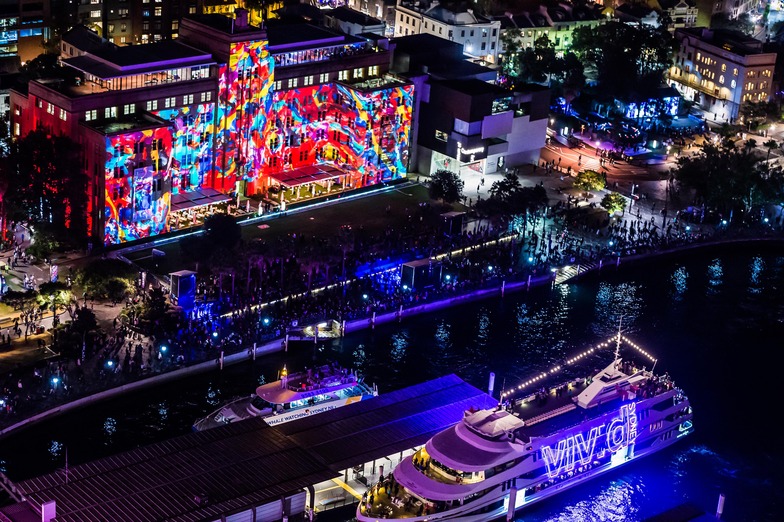
※Video/Photo: Vivid Sydney (Image courtesy of Destination NSW)
※Vivid Sydney began in late May 2009 as a countermeasure for the tourism slump during the Southern Hemisphere's winter. It has expanded annually and is now one of the world's largest "festivals of light, music, and ideas," attracting approximately 2.3 million visitors in 2016. Video here
Muramatsu: When it comes to art, I think everything since Andy Warhol is essentially pop art. No matter how far I go, I'm ultimately just a commercial artist. But even that era of pop art has ended; now we're in the era of communication art. In short, communication is becoming an integral part of art. That's what participatory art means to me.
Take YouTube, for example. It's a video site, but it exists because people watch and give "likes." That makes it communication art. It's not just art that creates images; it's art premised on being seen and incorporating the reactions of those who see it. As all art becomes communication art, how do I create things I find truly interesting?
Yoneyama: Communication art sounds intriguing. Today, we've discussed "heart-moving direction" using the five senses as a keyword. Traditionally, direction theory has often been discussed by genre—acting, film, stage direction, sound direction—but hearing about an integrated direction theory for evoking emotion was very insightful. I'm not sure if this sums up today, but I just wrote a "Matrix of Emotional Direction."
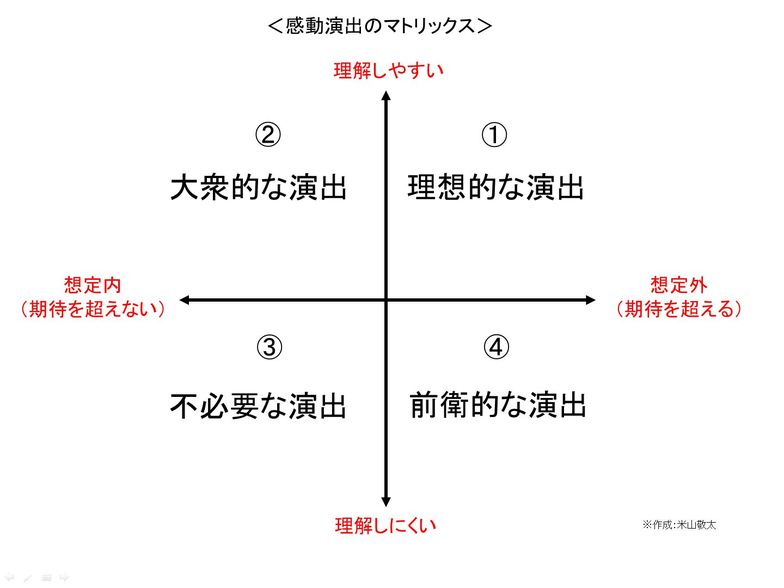
Yoneyama: I organized it on a coordinate axis with the vertical axis being "easy-to-understand direction" versus "difficult-to-understand direction," and the horizontal axis being "unexpected direction" that provides surprises versus "predictable direction" that follows the usual pattern. Earlier, Mr. Muramatsu mentioned that "art requiring explanation" is problematic. This falls into areas ③ and ④. However, area ④, "avant-garde direction," involves direction that requires the audience to think to understand it, and there are people who enjoy this kind of direction. Area ② represents popular presentations with familiar patterns. However, since Mr. Muramatsu mentioned "presenting common themes from entirely new perspectives," area ① becomes the ideal presentation in today's discussion. We look forward to seeing Mr. Muramatsu continue to evolve within this area, creating more advanced "Communication Art."
Thank you very much for today.
※" FLOWERS BY NAKED: Enchanted Paradise " will be held at Tokyo Midtown from July 30 to August 31, 2016.
For details, click here
<End>





